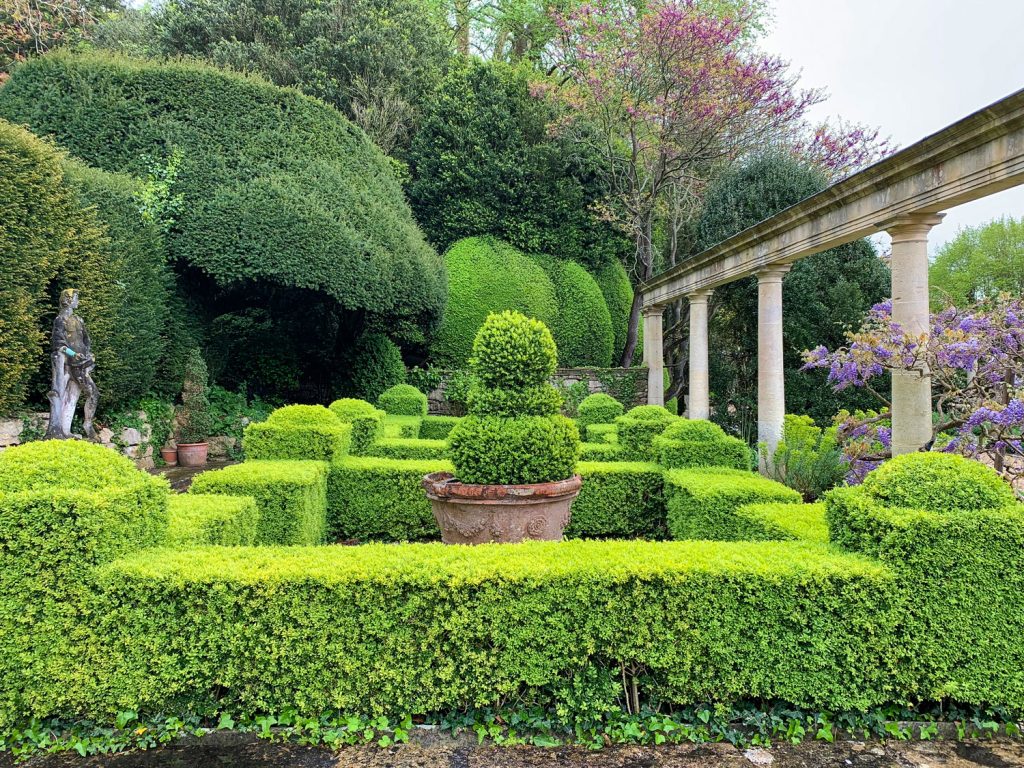
Surprisingly, the unanticipated highlight of my May week in the Cotswolds was the visit to Iford Manor, outside of Bath. Clearly, this property was created by one who marched to his own drummer. Eminent Edwardian designer, Sir Harold Peto, started his career as an architect, moved on to garden design, and enjoyed a “dabble” in set design, so deliciously apparent in his personal home from 1899-1933. His strong personality and design preferences made this visit for me a mind-clearing experience.
Once past the “veddy British” Georgian house and outbuildings...

I felt like Alice in Wonderland falling down the rabbit hole, embraced by a beguiling sense of timelessness, which was actually enhanced by the rain and mist.

Masses of rosemary rambling and scrambling from metal urns amused me as I mounted the steps up to the terraced gardens.
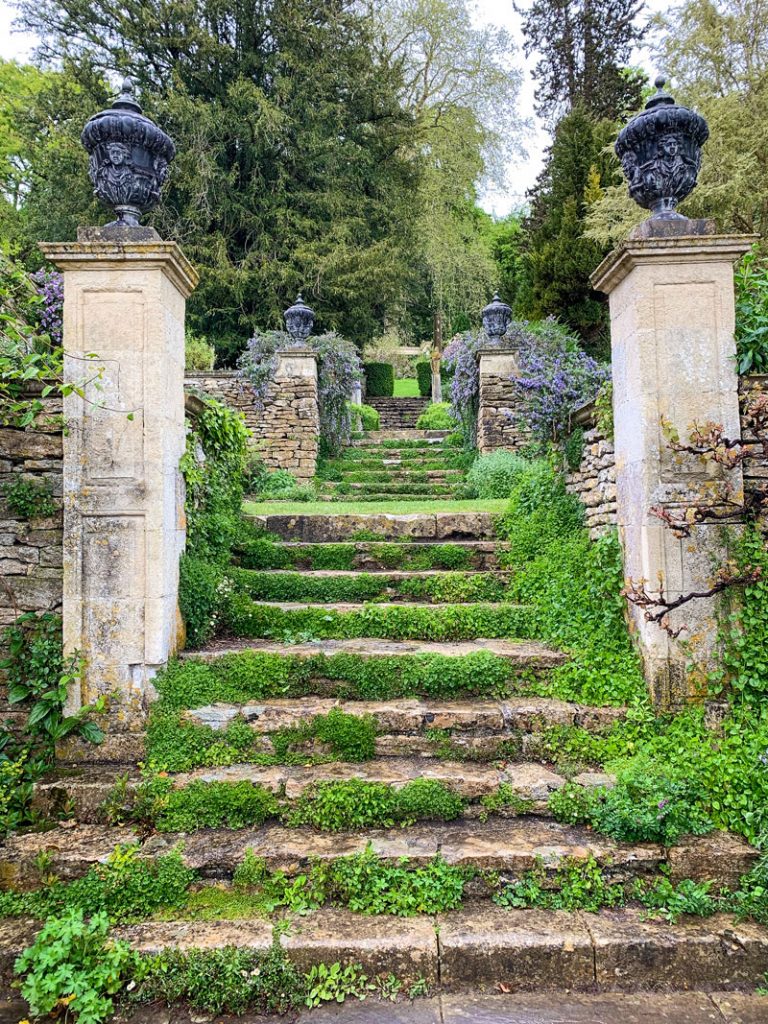
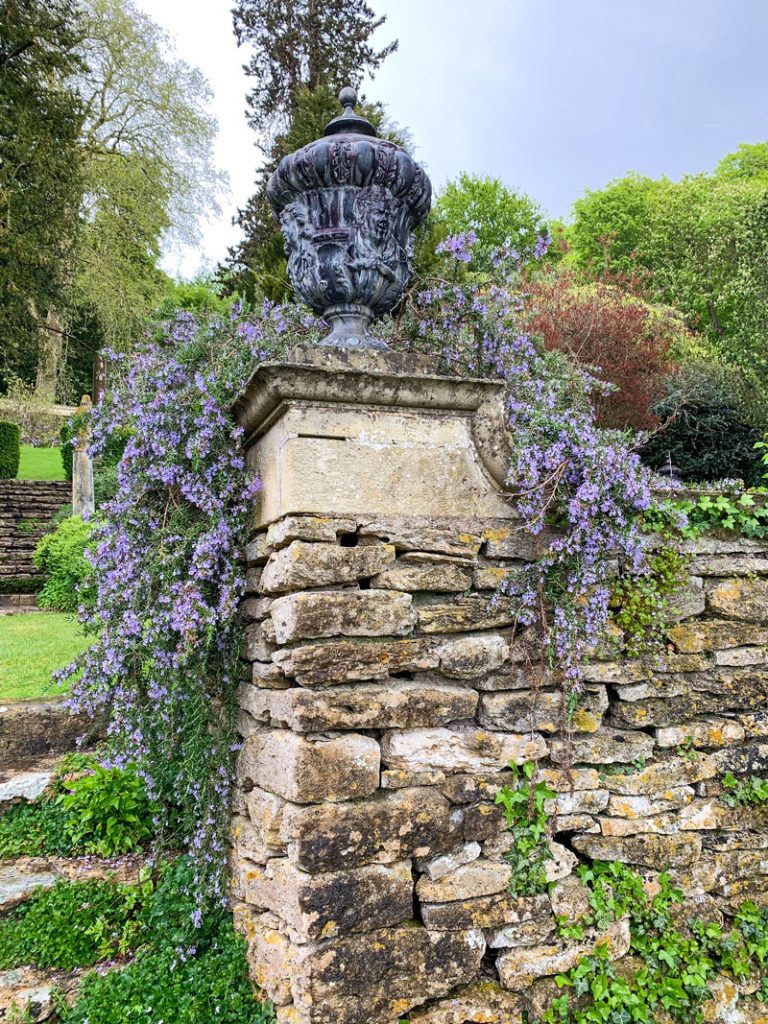
On a steeply wooded slope, Peto designed an Italianate garden that married his design philosophy– for the highest development of beauty, a garden must be a combination of architecture and plants in “just proportion”– with a skill in visualizing and placing his collection of classical architectural pieces and fragments; as an example the Casita, its shallow, faux facade “dressed” with wisteria.
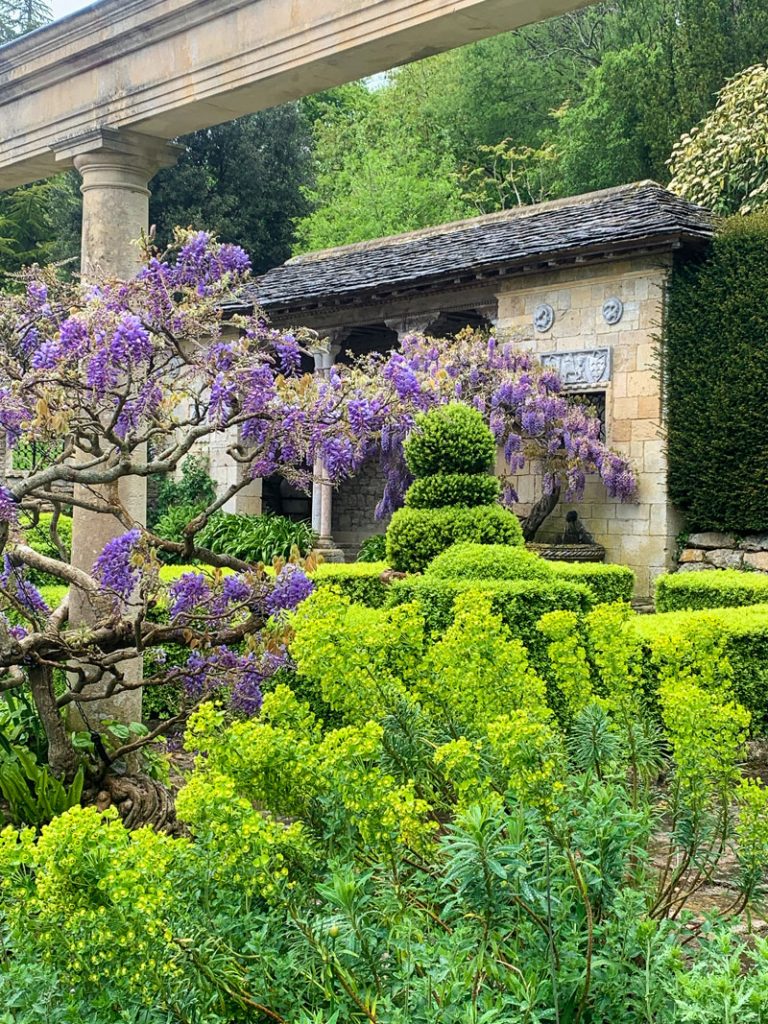
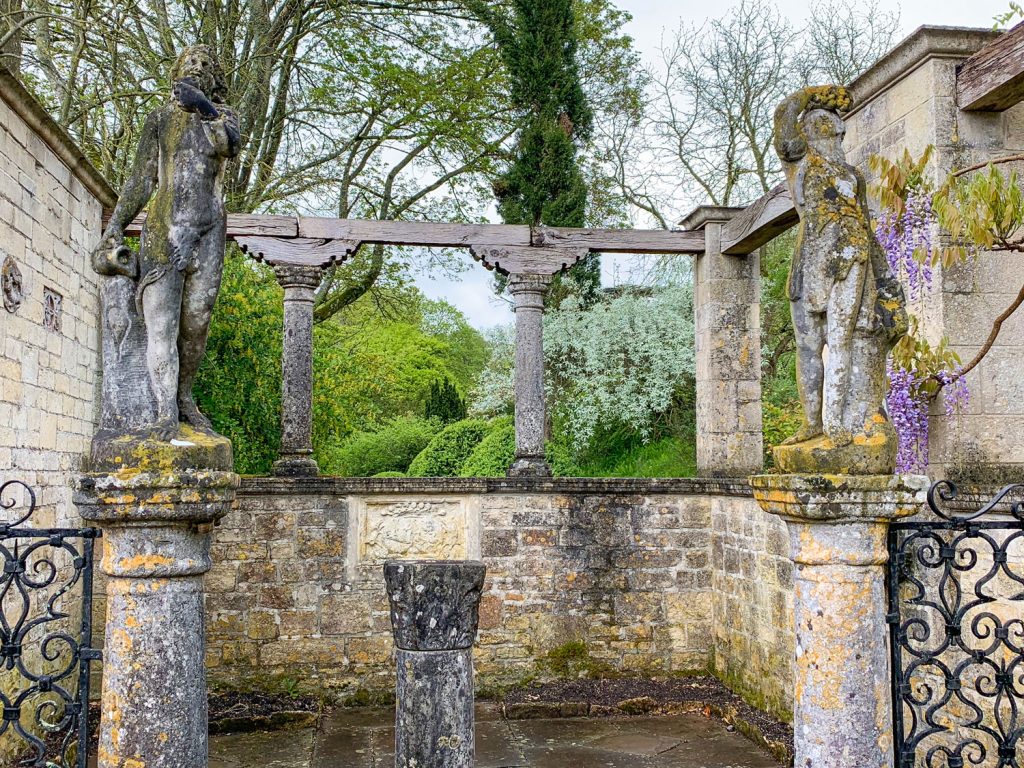
Once at the top, you can fully appreciate that the garden is laid out in a series of ascending walks and terraces, punctuated by the clipped shapes of evergreens and columns, urns, figures, fountains and varying sized facades of stonework. The Great Terrace, decorated with classic elements from a range of historic periods, provides a welcome stroll along the main level.
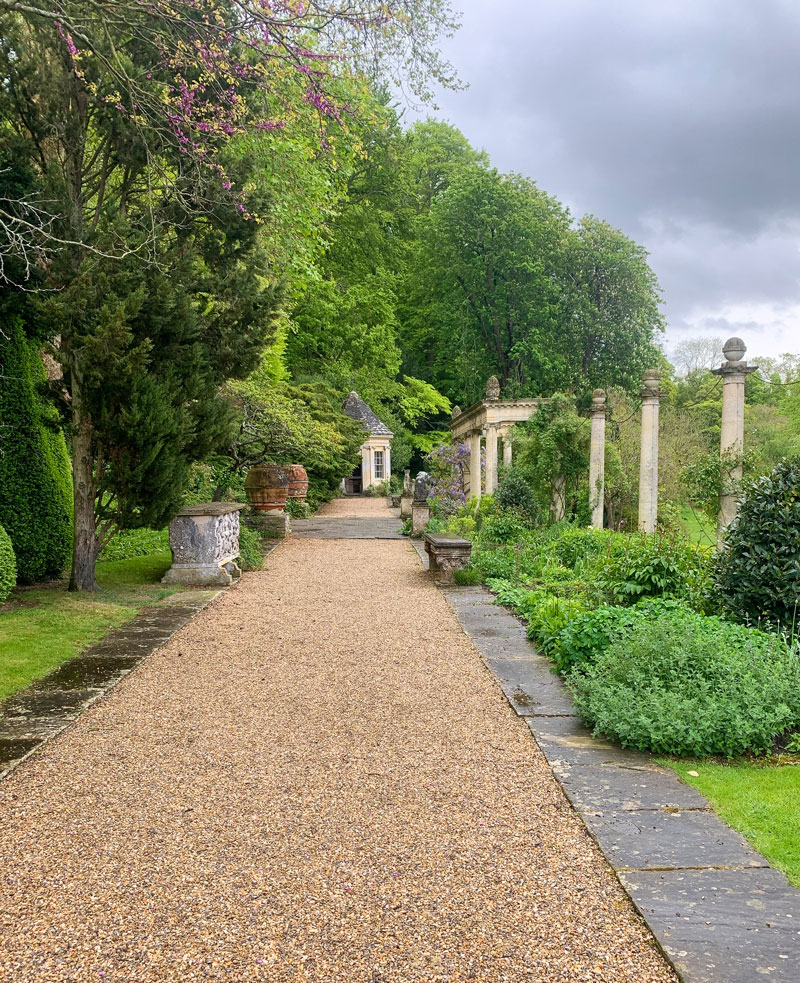
At the end of the terrace, the18th century garden house (complete with original fireplace) is positioned so as to conceal the fact that a path leads on to the Cloisters.

The garden plantings and placement also mirrror a trend during the Edwardian period of a more informal and natural style of “wild” planting. All of which brings a lyrical quality to the overall impression, not a stiffness for which earlier Italian gardens were known.

It was a wonderful coincidence that wisteria was in bloom, casually draping over the architectural pieces (in marked contrast to a more formal use in other gardens).


Peto’s artful talents are also seen in the framed glimpses over the garden that are continued by gaps in planting and colonnades. Enjoying a pure sense of theater, the designer used these architectural elements to contain the space and control the views.

The Cloisters, Harold Peto’s last building at Iford and constructed by local masons, incorporates a wealth of his collected stonework, statues and artwork.
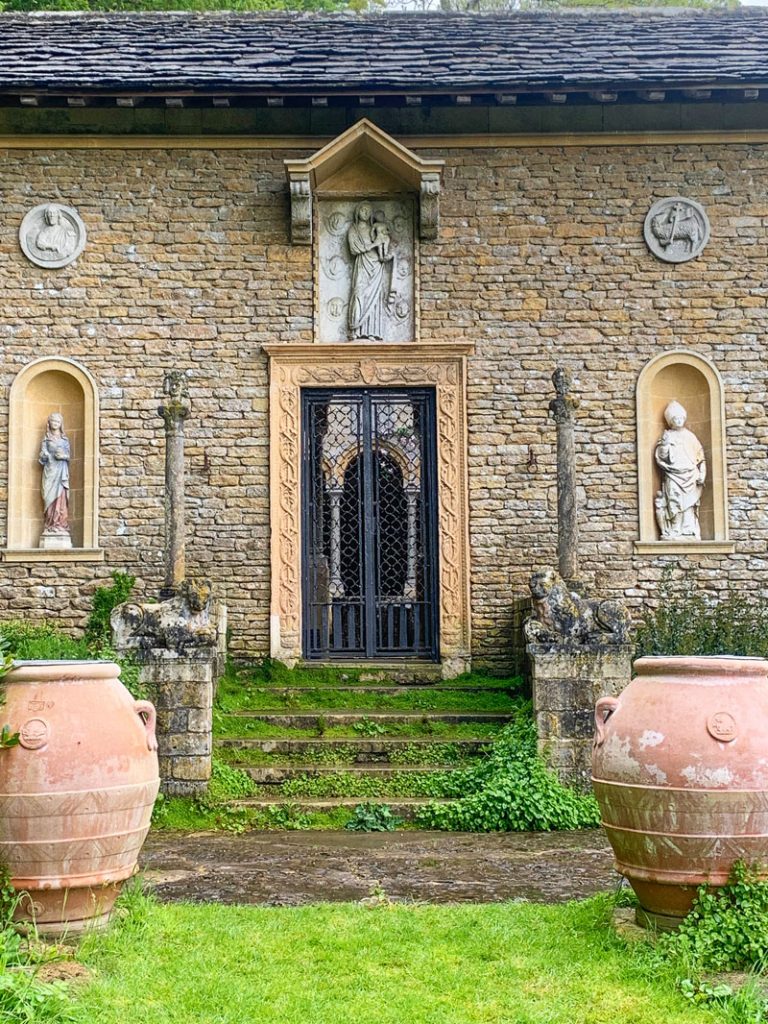
Garden stewardship is very important in England and that fine point was made ever so clear that day at Iford. This time capsule of one masterful designer’s work would surely have been lost to oblivion were it not for the current owners (since 1964) very real labors. As quoted in Gardens Illustrated, “By reviving the post First World War style of planting, we aim to try and re-capture the spirit of the garden in Peto’s time.” They have been helped by a recent stroke of luck — the discovery of some 200 original cast alloy plant labels dug up from the garden. I am very much anticipating my return to this singular and magical garden in the Cotswolds.





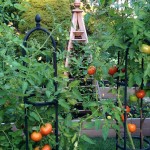



This garden is truly fabulous. Your photos are wonderful,thank you for sharing ❣️
And thank you for your kind words! xB
Iford is such a treasure trove, inside and out. The house is just as splendid as the gardens. And the owners are lovely.
Perhaps on my next trip I’ll have the opportunity to see the interiors…xB
I absolutely loved this post and the pictures. Just splendid. Thanks, Nidhi
Love this so much, thank you Bettie! Makes me yearn all the more for a garden to steward. Reading you helps keep the dream alive!
Always love hearing from you!! What a lovely thought to keep in mind as I sit at my computer each week composing the next e-journal (detest the word “blog.”)
Hope your summer is going along SWIMMINGLY!! xB
I love you posts. Since moving (happily) into our condominium I sorely miss my lovely garden. Your gorgeous photos revive me. Your taste is perfection. thank you for sharing.
Music to my ears, especially to know that my images are taking the place of a garden you no longer have! Thank you for your special words. xB